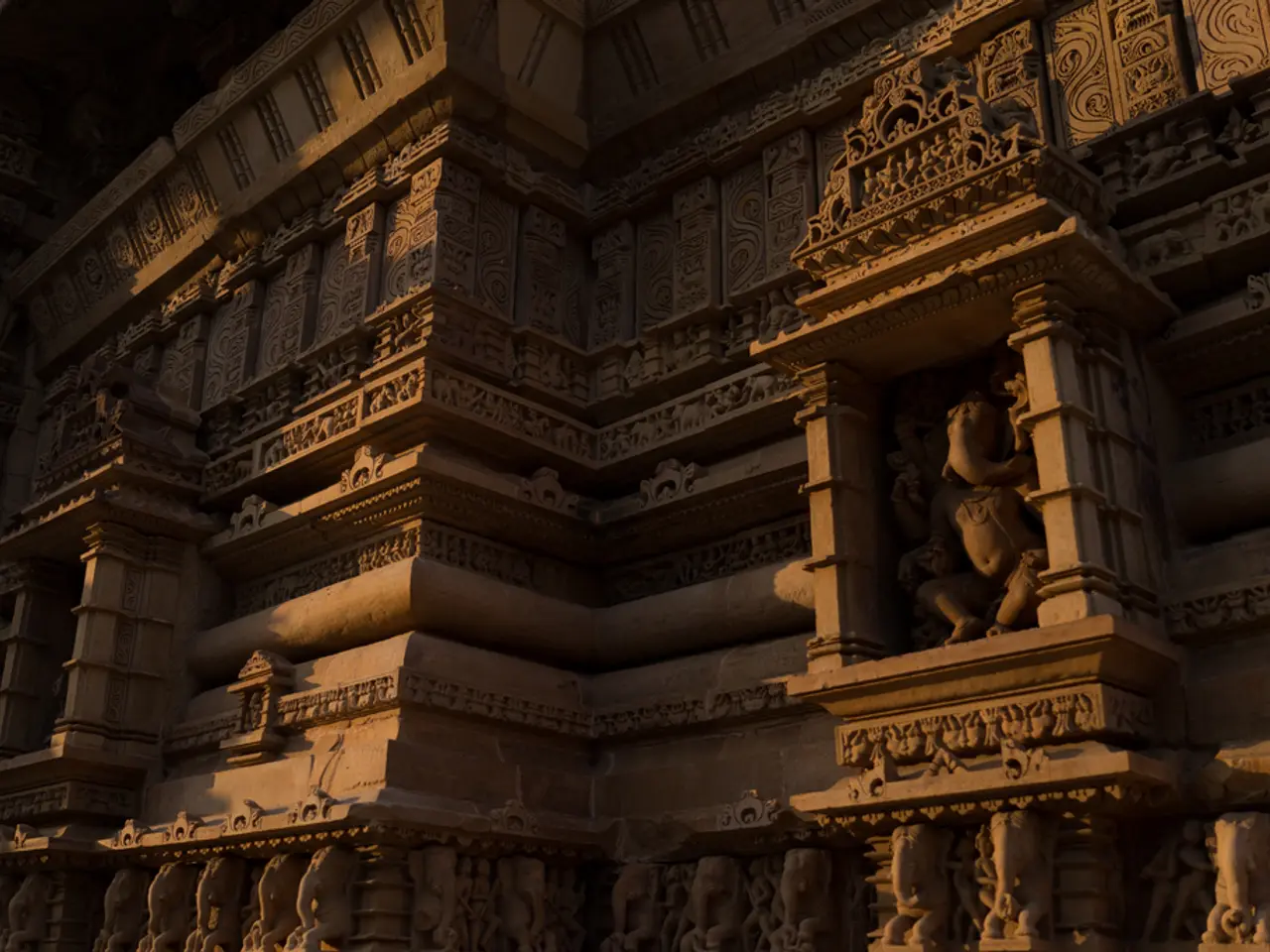Exploring the Mediterranean: Venture Through History, Culture, and Relationships
The Mediterranean region, a vibrant melting pot of cultures and traditions, showcases a profound blending of East and West. This rich cultural fusion is evident in key destinations, architectural styles, and artistic traditions that have shaped the region's identity.
Architectural Marvels
From the ancient civilizations of Egypt and Mesopotamia, influences permeated visual arts and architecture, introducing technologies, religious motifs, and structural forms that shaped Egyptian culture. This early East-West cultural mingling can be seen in Istanbul, where iconic structures like the Hagia Sophia and the Topkapi Palace blend Christian basilica design with Islamic architectural innovations.
Artistic Syntheses
The Levant and Mediterranean basin acted as cultural crossroads, allowing the transmission of artistic motifs and techniques. Mesopotamian religious imagery and symbolism influenced Egyptian art, while Ottoman artistic practices absorbed elements from Byzantine and Islamic traditions. These blended influences are visible in mosaics, tile work, and manuscript illumination.
Culinary Fusion
The Mediterranean's culinary tapestry reveals East-West mingling via the exchange of ingredients, spices, and cooking methods. Ottoman imperial cuisine in Istanbul reflects a fusion of Middle Eastern, Central Asian, and Mediterranean flavors. Earlier, culinary influences passed to Western Europe from Arab and Near Eastern cultures during the Crusades, significantly enriching Western culinary practices.
Key Mediterranean Destinations
Ancient crossroads like Egypt and Istanbul, Phoenician and Roman ports, and coastal cities in the Levant and Mediterranean showcase a rich history of cultural exchange. These destinations acted as persistent hubs bridging diverse ancient civilizations, influencing each other in goods, ideas, and cultural practices.
In modern times, the Mediterranean's cultural legacy continues to thrive. In Provence, Château de Berne offers wine country luxury among vineyards that trace back to Greek colonization. In Seville, hidden tablaos preserve flamenco tradition, while Funky Gourmet in Athens uses molecular gastronomy to transform ancient Greek ingredients.
The Hotel Villa Oniria in Granada, Spain, features Islamic gardens and contemporary luxury, with views of the Alhambra's red walls, a testament to the region's enduring East-West cultural blending. Similarly, the Four Seasons Sultanahmet in Istanbul was once an Ottoman prison, housing political prisoners and intellectuals, now offering luxurious accommodation.
The Benaki Museum in Athens houses 37,000 artifacts, including Byzantine icons and Islamic calligraphy, showcasing Mediterranean cultural exchange. The Grand Bazaar in Istanbul has hidden ateliers within the 500-year-old Zincirli Han caravanserai, where Armenian craftsmen like Sevan Hallaçyan work in six-foot-wide storefronts.
At Abantal in Seville, Michelin-starred dishes trace North African spices through Spanish history. Le Petit Nice offers three Michelin stars for bouillabaisse that represents centuries of Mediterranean convergence. Istanbul's Spice Bazaar is perfumed with cardamom and sumac, and Pandeli serves Ottoman court cuisine, including the Sultan's Delight.
The Hotel Grande Bretagne in Athens has hosted royalty since 1874, and guests wake in suites overlooking the Acropolis. In Marseille, market tours with renowned chefs reveal how they source ingredients from across the Mediterranean's cultural spectrum. Villa Dubrovnik carves suites into cliffsides, and Restaurant 360° on the city walls serves contemporary Mediterranean cuisine where dignitaries once dined.
The Intercontinental Marseille Dieu is located in an 18th-century hospital overlooking the harbor where Phoenician traders once anchored. The Cyclades islands extend the philosophy of living well to island life, with Katikies perching above Agios Ioannis beach on Mykonos.
Balat, a district in Istanbul, was once home to Jews exiled from Spain, Greeks, and Armenians, and its narrow streets still echo with languages from those civilizations. The city walls of Dubrovnik, Croatia, are warm to the touch under the Adriatic sun and chime with church bells every hour.
This intricate web of connections across the Mediterranean basin created enduring legacies of cultural hybridity, visible in the shared and adapted recipes, architectural masterpieces blending stylistic elements, and artistic practices combining Eastern and Western motifs. The Mediterranean's rich cultural tapestry continues to captivate and inspire, offering a testament to the power of cultural exchange and the enduring legacy of East-West blending.
[1] Ancient Eastern Influences on Western Art and Architecture. (2020). www.britannica.com
[2] The Ottoman Empire and Art. (2021). www.metmuseum.org
[3] The Mediterranean in Antiquity. (2020). www.britannica.com
[4] The Influence of Arabic and Near Eastern Cultures on Medieval Europe. (2021). www.britannica.com
In the present-day Mediterranean region, the fusion of food-and-drink is a testament to its East-West blending, as Michelin-starred restaurants like Le Petit Nice in France and Abantal in Spain showcase dishes that integrate North African spices and other culinary traditions.
Traveling across destinations like Istanbul, Provence, and Seville reveals architectural marvels that epitomize this cultural melding, such as the Hotel Villa Oniria in Granada, Spain, which seamlessly combines Islamic gardens and contemporary luxury, or the Four Seasons Sultanahmet in Istanbul, remodeled from an Ottoman prison.




